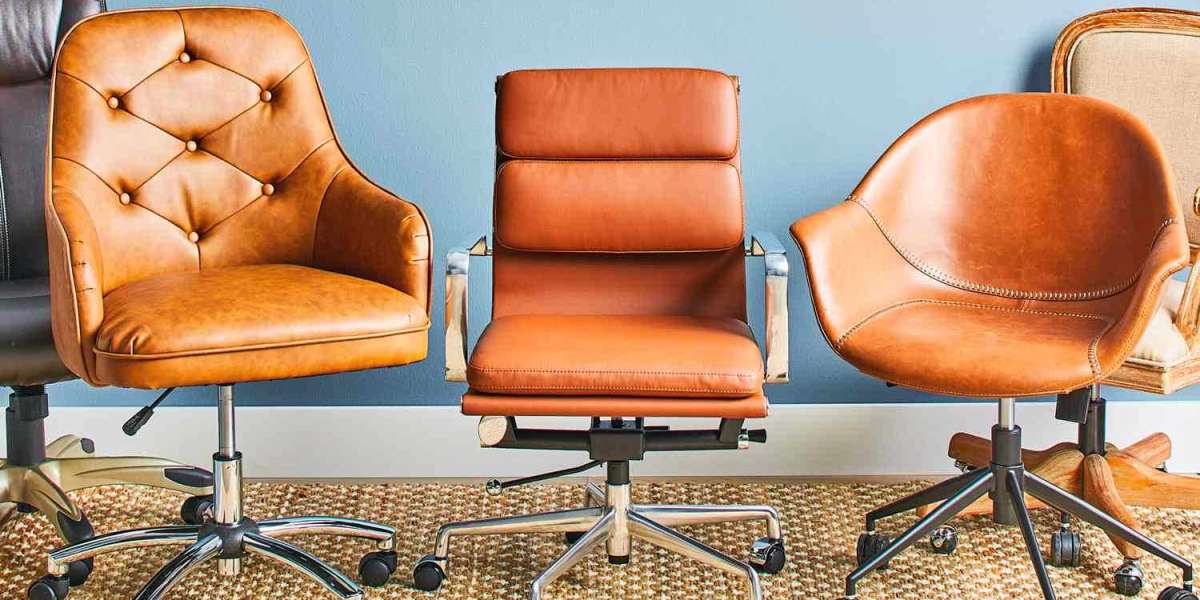In today’s fast-paced work environment, many professionals spend long hours seated at their desks. The design of office furniture, particularly chairs, plays a crucial role in influencing both productivity and health. An ergonomic office chair, designed to support the human body and reduce discomfort, is not just a luxury but a necessity for every workplace. This article will explore why ergonomic office chairs are essential, highlighting their impact on employee well-being, productivity, and the overall work environment.
1. Improved Posture and Reduced Back Pain
One of the most significant benefits of ergonomic office chairs is their ability to support proper posture. Poor posture, such as slouching or hunching over a desk, can lead to chronic back pain, neck stiffness, and musculoskeletal disorders over time. Ergonomic chairs are designed with adjustable features, such as lumbar support, headrests, and seat height, to ensure that users can sit with their spine aligned correctly. This helps to distribute body weight evenly and reduces strain on the lower back.
The lumbar support in ergonomic chairs is particularly crucial. It maintains the natural inward curve of the lower spine, preventing slouching and ensuring that the vertebrae remain aligned. By encouraging better posture, ergonomic chairs significantly reduce the risk of developing long-term back problems, which is one of the most common complaints in sedentary jobs.
2. Enhanced Comfort and Reduced Fatigue
Sitting for extended periods in a non-ergonomic chair can lead to discomfort, fatigue, and even pain. An ergonomic office chair, however, is designed to accommodate the body’s natural movements and provide comfort even during prolonged use. Features like adjustable armrests, padded seats, and reclining mechanisms allow users to tailor the chair to their specific needs. This customization reduces pressure points and ensures that the body remains comfortable, even during long workdays.
Comfort directly impacts productivity. When employees are comfortable, they are less likely to feel fatigued or distracted by physical discomfort. As a result, they can maintain focus on their tasks for longer periods, enhancing overall work performance.
3. Increased Productivity and Work Efficiency
The design of an ergonomic chair can have a direct impact on employee productivity. When workers experience physical discomfort, it distracts them from their tasks and can lead to frequent breaks or slower work performance. In contrast, ergonomic chairs promote physical well-being, allowing employees to concentrate fully on their work without being distracted by aches and pains.
Moreover, ergonomic chairs help to reduce the risk of repetitive strain injuries (RSIs), such as carpal tunnel syndrome, which can arise from improper seating positions or poor desk ergonomics. By providing the necessary support and ensuring that employees maintain proper posture, ergonomic chairs help to prevent these common workplace injuries. Fewer injuries and discomforts translate to fewer sick days and higher productivity, benefiting both employees and employers.
4. Positive Impact on Employee Health and Wellness
A workplace that prioritizes employee health and wellness is likely to see better overall morale and job satisfaction. Ergonomic chairs are an investment in employee well-being. When workers feel that their employer cares about their comfort and health, it fosters a positive work culture, leading to increased motivation and job satisfaction.
Additionally, prolonged sitting in non-ergonomic chairs can contribute to a variety of health issues, including poor circulation, joint pain, and even cardiovascular problems. Ergonomic chairs are designed to promote movement and proper blood flow. Many models feature dynamic sitting options, which allow users to adjust the chair’s position and angle throughout the day, encouraging subtle movements that can prevent stiffness and circulation issues.
5. Cost Savings in the Long Run
While ergonomic chairs may seem expensive initially, they can save businesses money in the long run. Investing in quality chairs can reduce the likelihood of work-related injuries, which can be costly in terms of medical expenses and lost productivity. Fewer sick days, less worker compensation claims, and lower turnover rates are some of the long-term financial benefits that come with using ergonomic office chairs.
In addition, by enhancing employee productivity and reducing downtime caused by discomfort or injuries, businesses can achieve higher efficiency and profitability. Ergonomic chairs are thus not just an expenditure but an investment in a healthier, more productive workforce.
Conclusion
Ergonomic office chairs are essential in today’s workplace, offering a wide range of benefits from improved posture and comfort to increased productivity and better overall health. Investing in ergonomic chairs demonstrates a company’s commitment to employee well-being and creates a more positive, efficient work environment. By reducing the risk of injury and promoting long-term health, ergonomic chairs are a critical tool for any workplace that values its employees and their contribution to success.
https://www.reddestin.pk/








